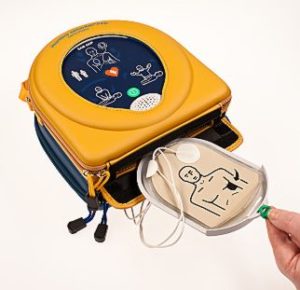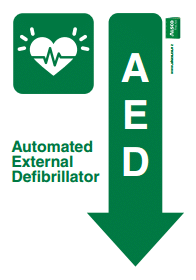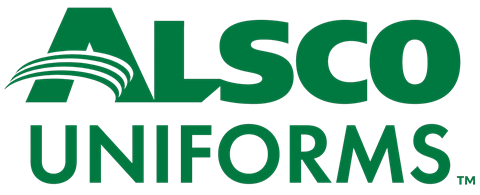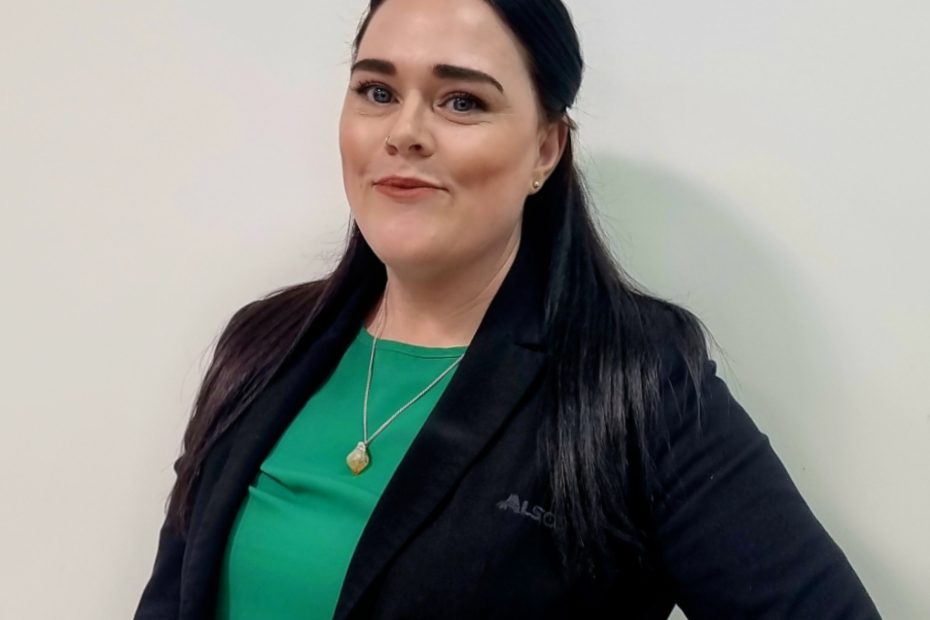On a normal day, children spend most of their time in schools and learning institutions.
Every parent wants to be certain that their children are safe when not in their care.
Cardiac arrest can happen without warning. It could be at a sporting meet, debate club or other school event.
It is important for schools to provide adequate first aid measures to keep children, staff and visitors to the school safe.
1. What Is Cardiac Arrest?
Cardiac arrest occurs when the heart stops working or pumping blood normally. When a blockage prevents blood from getting to the heart, the heart is starved of oxygen and this affects its regular rhythm.
Most of the time it means the heart has not received enough oxygen to effectively pump blood to the body. The pulse is weakened and when the blood stops circulating the brain is starved of oxygen. At this point, the victim falls unconscious and stops breathing. If left untreated, the victim could die.
A cardiac arrest can be caused by many things and it differs from children to adults.
For children, such causes could be:
- Trauma
- Respiratory illness
- Cardiac disease (usually hereditary)
Young children are affected because of their developing hearts. Their bodies are still growing and so their soft chest walls are easily affected. It could be as simple as bumping into another person/object or a sharp blow to the child’s chest.
The chance of survival during a cardiac arrest decreases by close to 10% for every minute the victim goes without Cardiopulmonary Resuscitation (CPR) and a defibrillator shock.
This is why defibrillation is very important. The sooner the victim receives CPR and AED shock, their chances of survival are increased.
If you ever find yourself in an emergency, remember these steps:
- Call for an ambulance.
- Administer CPR.
- Use an AED as soon as possible.
2. What Are AEDs?

An Automated External Defibrillator (AED) is used to administer a safe electric shock in an attempt to restart the heart.
They are portable, lightweight and easy to use. It is true that they can be used by anyone, regardless of experience quite effectively.
They are found in many public spaces including gyms, airports, banks, recreational centres and so on.
When used in combination with CPR, they can resume normal heart function. The process of CPR maintains the blood and oxygen circulation until the victim can receive a defibrillator shock.
Most medical practitioners use AEDs over other equipment for cardiac arrests.
You can watch this video about how to use the Alsco HeartSine Samaritan 500 P AED.
3. Should Students Learn First Aid, Including CPR and AED Use?
As part of health education, schools can choose to incorporate CPR training.
This improves response rates when victims experience cardiac arrest. It prompts bystanders into action.
The World Health Organisation believes that teaching children CPR for two hours in a year can boost survival rates and improve global health.
CPR is an easy and important skill to learn. Children can pick up these techniques quickly.
AEDs are designed to be used without training. However, proper training on the use of AEDs can improve their effectiveness. Training can answer common questions regarding AEDS. It also increases confidence and the willingness to help in an emergency.
These lessons are provided by local ambulance service or first aid trainers during Education Outside The Classroom (EOTC) sessions.
4. Emergencies and EOTC Activities
Education Outside The Classroom (EOTC) is not a new concept in New Zealand. It ranges from sports trips, school camps, museum visits and so much more.
There should be policies in place that include all major issues such as traumatic events.
Schools should do a risk assessment of all the EOTC activities before the actual event.
It is never pleasant when incidents occur during an EOTC, for any party involved. A response with procedural steps in case of any emergency should be planned ahead of time. This helps lessen the impact and speed up recovery.
The person in charge of EOTC events should check with the EOTC provider on the potential risks involved. Then confirm if there are staff trained in first aid on site. It is important to note how many first aid trainers are available and if the premise has an AED.
The EOTC provider should also provide a health and safety orientation. That includes emergency procedure and where first aid equipment may be located.
5. Benefits of Having an AED on a School Site
AEDs have voice prompts that provide step by step guidelines in an emergency situation.
For those that are hearing impaired, a step by step guide comes with all devices.
Whether a school decides to buy an AED lies with the board of trustees. The school’s health and safety policies, as well as workplace regulations, should be considered in the decision-making process.
Most schools have other activities going on besides learning. The community at large can have access to school buildings for sports events, civil emergencies, natural disasters and meetings.
When such events occur, it is worth considering the benefits of having an AED on the premises.
Although schools may be located near facilities such as hospitals. However, you can never predict an emergency. Traffic, obstructions on the road, and other factors can delay professional medical personnel from getting to the site.
Considering the rate at which the survival rate drops when it comes to cardiac arrest, it is beneficial to have an AED in schools.
5. Schools Should Train Staff in CPR and AED Use
All schools must have staff trained in first aid under the Health and safety act of 2010. This includes knowledge on how to perform CPR as well as use an AED.
Practical training is the best way to get familiar with using an AED, but not the only way. There are videos and e-learning training that ease the basic understanding of using this equipment.
Local emergency service personnel and local ambulance crews can visit your school to speak at assembly and engage the students.
This can help build the wealth of knowledge students have on areas like health and physical education, science and social studies. Real-time engagement with individuals in the medical field can help empower students to act in an emergency.
6. Where Should You Keep an AED in Schools?


A visible, central location that is accessible in an emergency is the best place to store an AED. Consider getting emergency signs placed right beside the AED.
When someone loses consciousness, there needs to be a clear process for getting the AED.
Did you know that in New Zealand there are apps for AED locations?
They are used to map the location of AEDs nationwide.
This makes it easy to access all nearby AEDs if you have your smartphone.
It is recommended that you register the location of your AED.
7. What Does the Law Say About AEDs in Schools?
There are regulations that place responsibility on persons conducting a business or undertaking (PCBU) or a board of trustees. They must have first aid provisions for others in their care.
Regulation 13 covers provisions for first aid facilities, equipment and number of first aid trainers.
This school trustees must assess the risks involved at the school and decide what is appropriate.
Ensuring the safety of children in schools is of the utmost importance.
The provision of an AED in a school building is not only helpful for students but the community at large.
Don’t Take a Chance, Get an AED for Your Workplace Today
An AED instantly makes your school safer for pupils, staff, parents and visitors.
You don’t have to risk a life. With Alsco, you can relax, because all the hard work is done for you.
We install, check and replace the contents of your AED throughout the year.
For an annual fee you can ensure that your school is equipped with the latest in AED technology.
Call your local Alsco branch and ask us about our rental fee.






